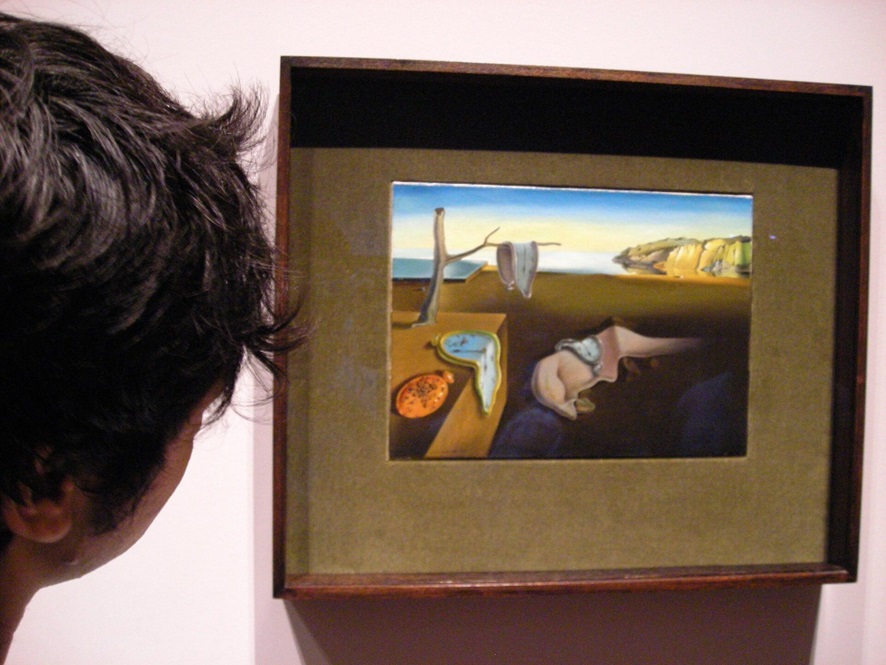- Humanities
- 30 de April de 2024
- No Comment
- 5 minutes read
The subtle art of György Ligeti influenced by Salvador Dalí

The subtle art of György Ligeti influenced by Salvador Dalí
Ligeti has revealed himself as a key element for the XX century avant-garde


Marta Vela
Beyond the cinema language and the extreme celebrity of his music after its appearance in kubrik films, the leading figure of Ligeti has revealed himself as a key element for XX century avant-garde thanks to its subtle sound textures and the amount of hidden messages that contains.
Concepts like the memory, the sound footprint and the blurred images were the first visual inspirations of Ligeti, he started to develop this composition ideas in the late fifty’s during the peak of a systematic movement like the total serialism, totally alien to his sensitivity. Although in his first stages, influenced by Bartok, the great Hungarian composer of the first half of the XX century, refer to obvious rhythmic and percussive structures just like the “ la musica reicercata”(1951-1953) that sounds to extenuation in “ Eyes wide shut” (1999), soon the reminiscences of the medieval polyphony, especially (Ockeghem) reproduced in giant sound masses at the pace of the canon would take hold of his initial productions after his escape of Hungary in works such as Apparitons (1958-1959), Atmosphères (1961) <Lux Aeterna (1966) or Lontano (1967) all of them under the influence of the so called micropolyphony
“Micropolyphony is a microscopic counterpoint, a dense texture internally animated where a great number of instruments play slight different versions of the same line. In essence, there can be a counterpoint in three or four parts of different melodies, but each one of them is multiplied, maybe, in a dozen or more variants of itself , and as a result we have and intricately complex net. Although micropolyphony can use simultaneously all the instruments of the score, the most characteristic is that the mass of instruments go in and out and the ability of the composer consists in keeping timbre colorations moving”
STEINITZ, R., (2003): György Ligeti, Music of the Imagination, London, Northeastern University Press, p. 104. (translated from French)
However , during the seventy’s, after the success of the works mentioned before, Ligeti made his way in a language even more mecanicco and with its intersection with the micropolyphony, merged in the successful expression of clocks and clouds , and homage to Karl Popper and the conjunction of both terms in his essay Of Clouds and Clocks : And approach to the problem of rationality and the freedom of man (1966)
Just since the composition of (Poeme symphonique pour cent metronomes (1962) Ligeti had retaken his interest in the rhythm that had culminated in a more meccanico style ( that is to say with more clocks than clouds) that his first visit to EEUU confirmed.
There, two capital works emerged, Clocks and Clouds (1972-1973) and San Francisco Polyphony (1973-1974) that combined the former micropolyphony with new rhythmic effects.
To this evolution of the ligetian language, as usual, other extra music influences added ,just as the illusory images of Escher and the texts of Borges concerning labyrinthine and concentric structures. In fact when he was watching the Dali canvas “ the persistence and disintegration of memory” Ligeti decide to call his new tendency Clocks and Couds combining the soft superficies with hard and impenetrable, creating a sounding melting pot of subtle chiaroscuro, whose flux freely expands into the threshold of times.
Thus , like an artistic amalgam the music of Ligeti, totally contemporary, and if you want, dissonant, contains a code of artistic interactions that is very useful to take into consideration when you are listening him.
Not in vain, in front of the scientism manifest of the integral Serialism ( Structures, Punkte, Kontra-Punkte..) the powerful imagination of ligeti would reflect in the poetical condition of his work titles, that the composer offers us under several artistic influences with the intricate arts of the magician.
Source: educational EVIDENCE
Rights: Creative Commons

